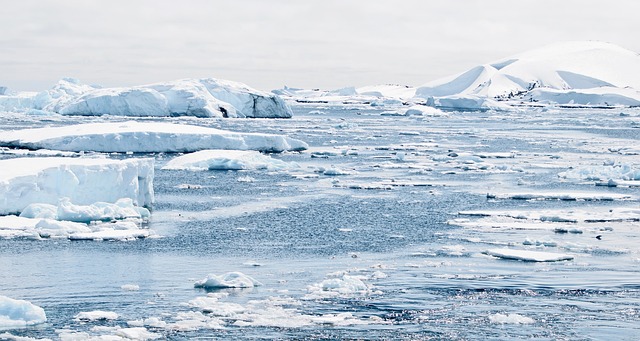According to NPR, the ice shelves in Antarctica are experiencing record-breaking lows of ice content caused by the use of fossil fuels and gas emissions.
Scientists have found that, as of late June, nearly one million square miles of ice is missing from the ocean. This measurement marks the smallest recorded amount of sea ice around the continent since 1979. Each year, the amount of sea ice naturally fluctuates, but over the past several decades, the ice content in the Arctic experienced a net decrease.
Ted Scambos, who studies Antarctica at the University of Colorado, Boulder, states that this loss is significant enough “to be alarming to climate scientists.”
These findings are concerning because of the environmental impacts and the possible damage to humans.
According to the Antarctic and Southern Ocean Coalition, the melting ice in the Antarctic is one of the most prevalent climate threats to humans today. For example, the coalition states that if the ocean level rose just a few feet, it would displace “roughly 230 million people who live within about 3 feet of the high tide line.”
Even without a significant impact like displacement, rising water can make minor impacts like contaminating fresh water sources, flooding homes, and damaging farmlands. These can have detrimental effects on coastal dryland environments.
However, the sea level is not the only component rising. The ocean temperatures have also reached record highs this year.
A water temperature buoy at Everglades National Park recorded a water temperature of 101 degrees Fahrenheit on Monday, July 24, 2023, which, according to the National Oceanic and Atmospheric Association, is around 10-20 degrees higher than the experienced average temperatures in past years. This sustained oceanic heatwave poses an extreme threat to human livelihoods that rely on oceans and food resources.
According to Jeff Turrentine, a Natural Resources Defense Council reporter, climate change may be a natural phenomenon.
He states in his 2022 article that “volcanic eruptions, fluctuations in solar radiation, tectonic shifts, and even small changes in our orbit have all had observable effects on planetary warming.”
However, scientists from NASA express that these “natural causes are still in play today, but their influence is too small, or they occur too slowly to explain the rapid warming seen in recent decades.”
In short, the massive spike is not a natural occurrence. So, what is causing this rapid change?
Scientists from the Intergovernmental Panel on Climate Change say, “It is unequivocal that human influence has warmed the atmosphere, ocean, and land.”
Emily Harlow wrote this story for the “hard news” assignment in her senior English class, Communication Analysis and Production. It has been lightly edited for formatting.





